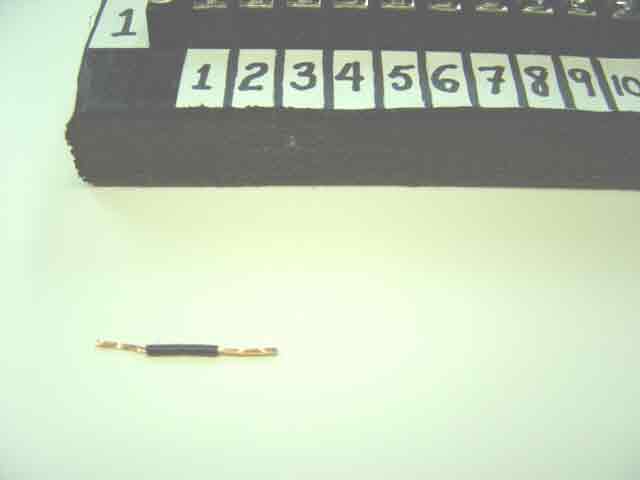--more--

Go to top of page
| For reference books and articles relating to these pages, see our bibliography | ||
| Are you getting tired of looking at trains? Try the Mad Toy Collector's exhibition, or visit The Heraldry Guy! | ||
| Searching for a particular topic in these pages? Try our subject index (updated continually) | ||
| It's all being made into a serialized movie! Click here to watch the movie episodes! | ||
| Go to the Next Plate | Go to the Previous Plate | Go to the Numerical Plate Directory |
Plate 232: Wiring the point motors through the distribution center, Part 10: a jumper wire for the "common" bus
(This plate added NOV 2003)
|
The sketch for the point-motor wiring scheme in Plate 166 shows that one of the 10-position terminal blocks (the one that collects the black wires from all the point motors) is "bus-wired". We will designate the block at row 1 of our power distribution board as the bus-wired block. Bus-wiring requires that all 10 positions in the block are electrically joined together, so that each position is at the same electrical "potential" (voltage) as any other position. The 10 positions will then constitute a single "power bus".
--more-- |

|
|
The accompanying picture shows a short length of hook-up wire that has been stripped at both ends. This short wire is called a "jumper wire", or just "jumper", because the current that it carries will run ("jump") only a short distance, from one position to the neighboring position within row 1. Nine such jumper wires will be connected between every pair of positions in the block, thus creating a "bus". After the block is bus-wired, a long single black wire, originally packaged with an R044 lever switch, will be connected to one of the positions in row 1. The other end of the long black wire will be connected to one of the AC binding posts of a constant-voltage power source (such as the accessory post of a Hornby R965 Train Controller). The long black wire is called a "common" wire, because it will connect, through the bus, to the black "common" wires of all the R8014 double-solenoid point motors. See Plate 113 for a diagram illustrating a "common" wire.
Go to top of page |
|